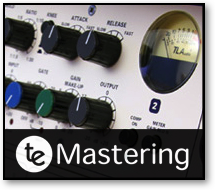




These production tips and tricks are designed to help you make the most of your music. Covering everything from mic technique to post-production, we hope you find them useful. If there’s a topic you’d particularly like to see covered then please feel free to get in touch




Industry news, useful links and what’s going on at Tenth Egg
© Tenth Egg Productions 2007




A different approach to music production.

Tip 2 : Panning
music mastering

Tips and tricks from our engineers to help you with your music making

In the last tip we looked at how filtering can play an important part in giving each part its own space in the mix. Now we'll explore how panning can help craft a mix which has both clarity and is engaging to listen to.
In the early days of stereo there were no conventions about where stuff should be positioned left to right in the mix, so drums might end up on one side and vocals on the other. However, today there is a general agreement about where certain instruments 'aught' to be placed. For example the bass is almost always placed in the centre of the speakers, as is the kick drum and lead vocal.
To retain the clarity of these key mix components it makes sense to pan others out to either side. A bass and vocal won't compete for space in a mix, but elements that occupy a similar area of the frequency spectrum will (like a lead guitar and vocal). In fact it is also a good idea to keep any similar sounding parts separated (except where a deliberate layering / combining effect is intended). Take for example a doubled guitar part. Positioned together these two tracks will probably fight for space and cause confusion within the mix. However, panned to either side of the mix they can create a thick wall of sound that retains the clarity of each part, where small differences in playing will enhance rather then detract from the track.
The aim is create width, but without imbalance, for example a bass panned hard right would make for an uncomfortable listening experience. A good general principal is that the higher or more secondary a sound is the wider it can be panned without causing such an imbalance in a mix. However, this is not to say that we should not use pan to make elements stand out and create periods of deliberate imbalance to engage the listener. After all pan is as much an effect it is a tool, and lots of tracks will start with a lone element panned hard to one side.
Sometimes we’ll have a mono mix element that we don’t want to pan left or right, but we also don't want in in the centre, detracting from our lead parts. (A clap sound for example) If double tracking isn't an option then 'fake' stereo can be a useful trick to use. Following a similar principal to real double tracking two copies of the original file are created and panned left and right. To one of these copies a small delay is added (around 20-30 milliseconds). This delay is enough to trick the ear into thinking that it is hearing two distinct sounds but short enough not to cause timing issues. It's a technique that can also be very effective on percussive and other elements such as doubled rap or or backing vocals, and has the added benefit of producing more predictable and controllable results then the traditional double-tracking method.
With the advent of surround mixing the opportunity to experiment without worrying about mixing conventions is once again open and we'll look more at surround capture and mix techniques in future tips. However, stereo still offers plenty of options for creative uses of pan and it is important to view the above are general guidelines to help create an effective stereo mix rather then hard 'rules'.
Want more? Read all our production tips at: www.tenthegg.co.uk/tips/archive or subscribe to the RSS feed to get new tips direct to your desktop: www.tenthegg.co.uk/tips.xml








